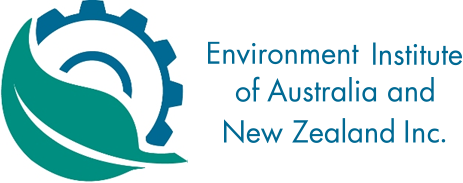-
Member Login
- Home
- About
- Institute Groups
- Membership
- Events
- News & Publications
- Institute Programs
- Resources
- Jobs Board
- Contact Us
- Site Info
Impact Assessment Special Interest Section releases new guidelines
The Special Interest Section for Impact Assessment (SIS-IA) has developed resources to support effective implementation of impact assessment (IA). Documents have been prepared by experienced IA practitioners within the SIS-IA to provide guidance on good practice in IA. While they have been written to apply generally in Australia and New Zealand, IA practitioners should also consider the specific requirements of the jurisdiction within
which they operate.
Guidelines for impact assessment
These guidelines describe the general principles which should govern and
guide the IA process and the practices that should be followed at each
stage of the IA process:
Screening – to determine the appropriate form of IA for a project, in particular whether it justifies the preparation and publication of a formal environmental impact statement (EIS) or similar public document.
Scoping – to determine the environmental issues relevant to a project and the points in the decision-making process when these issues need to be addressed.
Technical analysis and assessment – in terms of understanding the environmental effects (adverse and beneficial) of a proposal, comparing options for achieving the proposals objectives, and identifying mitigation measures or offsets for adverse impacts.
Reporting and stakeholder involvement – commonly through an EIS or similar document for government agency and community response, although other forms of consultation may also be implemented, including measures implemented outside the statutory review
process.
Independent review – review of the EIS or other public document and agency/ community responses by the authority responsible for administering the statutory review process.
These guidelines are aimed at all environmental practitioners involved in IA, in particular, those relatively new to the process as well as proponents and others who are involved or anticipate being involved in IA.
Good Practice Statements on Environmental and Social Impact Assessment
This set of 25 good practice statements was prepared by a committee of IA practitioners in the South-East Queensland Division of EIANZ. They are aimed at more experienced IA practitioners and set out the characteristics of good practice IA so that it:
- Achieves its purpose
- Assists with orderly development
- Rigorously evaluates impacts
- Achieves desired performance outcomes.
The committee also looked at opportunities for reform of IA in Queensland. Again, many of the issues considered also appear to be applicable to other jurisdictions. The full set of reports is available below.
EIANZ Position Statement – Incorporating environmental considerations into development projects
A draft position statement on this topic was endorsed by the SIS-IA and forwarded to the EIANZ Policy and Practice Standing Committee for consideration. It is expected this draft statement will be released for comment shortly.
Next Steps
The SIS-IA is now contemplating priorities for developing guidelines on more specific components of IA. Suggestions and feedback can be emailed to the Chair of the SIS-IA, Lachlan Wilkinson.
We acknowledge and value the rights and interests of Indigenous Peoples in the protection and management of environmental values through their involvement in decisions and processes, and the application of traditional Indigenous knowledge.

